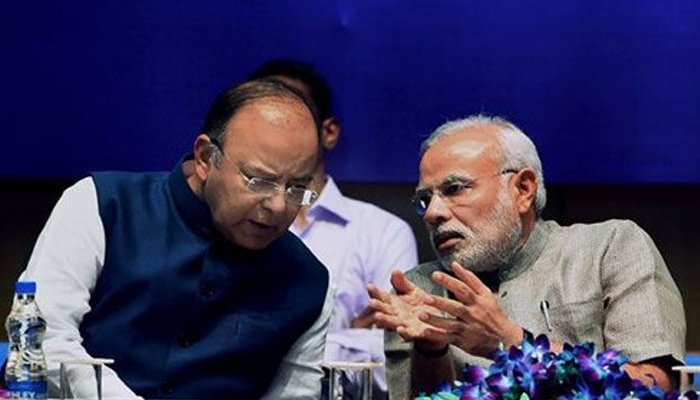Central government has cut the gross borrowing in the second half of this fiscal year. As oil prices soared in recent month and import bill has risen, there were expectations that government may raise the fiscal deficit target. However Economic Affairs Secretary, Subhash Chandra Garg said the government is confident of meeting fiscal deficit target of 3.3 percent in this fiscal year. “Gross borrowing will be at ₹2.47 trillion for the October-March period. The borrowing programme will be spread across 21 weekly auctions of government bonds, ending the calendar on 8 March,” added Garg. The borrowings will be cut by 70,000 crore to meet the fiscal deficit target.
Government plans to compensate reduction in borrowing by various means including issuance of retail inflation indexed bonds in October to March period. In the first two quarters of this fiscal government expenditure soared and many economists presented the view that government may not be able to achieve fiscal deficit target. This would have made bad influence on macroeconomic conditions. But the government has decided to seek other means to finance expenditure like reducing the government securities buyback target and increased inflow from small saving schemes. A few days back government increased rates on various small saving schemes like Kisan Credit Cards, PPF etcetera to make them more attractive to retail investors. Government plans to finance expenditure through inflow from these schemes. “Small savings schemes will provide an alternative which should help the government avail a higher net amount from the National Small Savings Fund (NSSF), compared to its target of ₹75,000 crore in 2018-19,” said Garg.
The reduction in external debt by 2.8 percent to 514 billion dollars is also responsible for the firm stand of the government on fiscal deficit. In June quarter external debt recorded 14.9 biilion dollars decrease, this must have boosted the moral on the reduction in borrowings. The external debt to GDP ratio stood at 20.4 percent in June quarter compared to 20.5 percent in March quarter. However RBI has said that external debt reduction was primarily due to strengthening of US dollars against other world currencies including rupee. “Valuation gains due to the appreciation of the US dollar vis-a-vis the Indian rupee and major currencies (viz, Japanese yen, euro, SDR, and pound sterling) were placed at USD 13 billion. Excluding the valuation effect, the decrease in external debt would have been USD 1.9 billion instead of USD 14.9 billion at end-June 2018 over end-March 2018,” RBI said.
The reduction in external debt and inflow from non-commercial borrowings could help the government to stick to fiscal deficit target. Maintaining fiscal discipline has been one of the major achievements of Modi government. Previous UPA government has taken fiscal deficit to double digit last years to won the election. But Modi government plans to be fiscally prudent even as general election is few months away. Being fiscally prudent is one major thing for macroeconomic stability and sustainable economic growth. In previous decade UPA government tried to achieve economic growth and won elections by huge deficit spending. This proved fruitful in short-term but in long term it was one the factors responsible for slow economic growth in last three years of UPA government.
